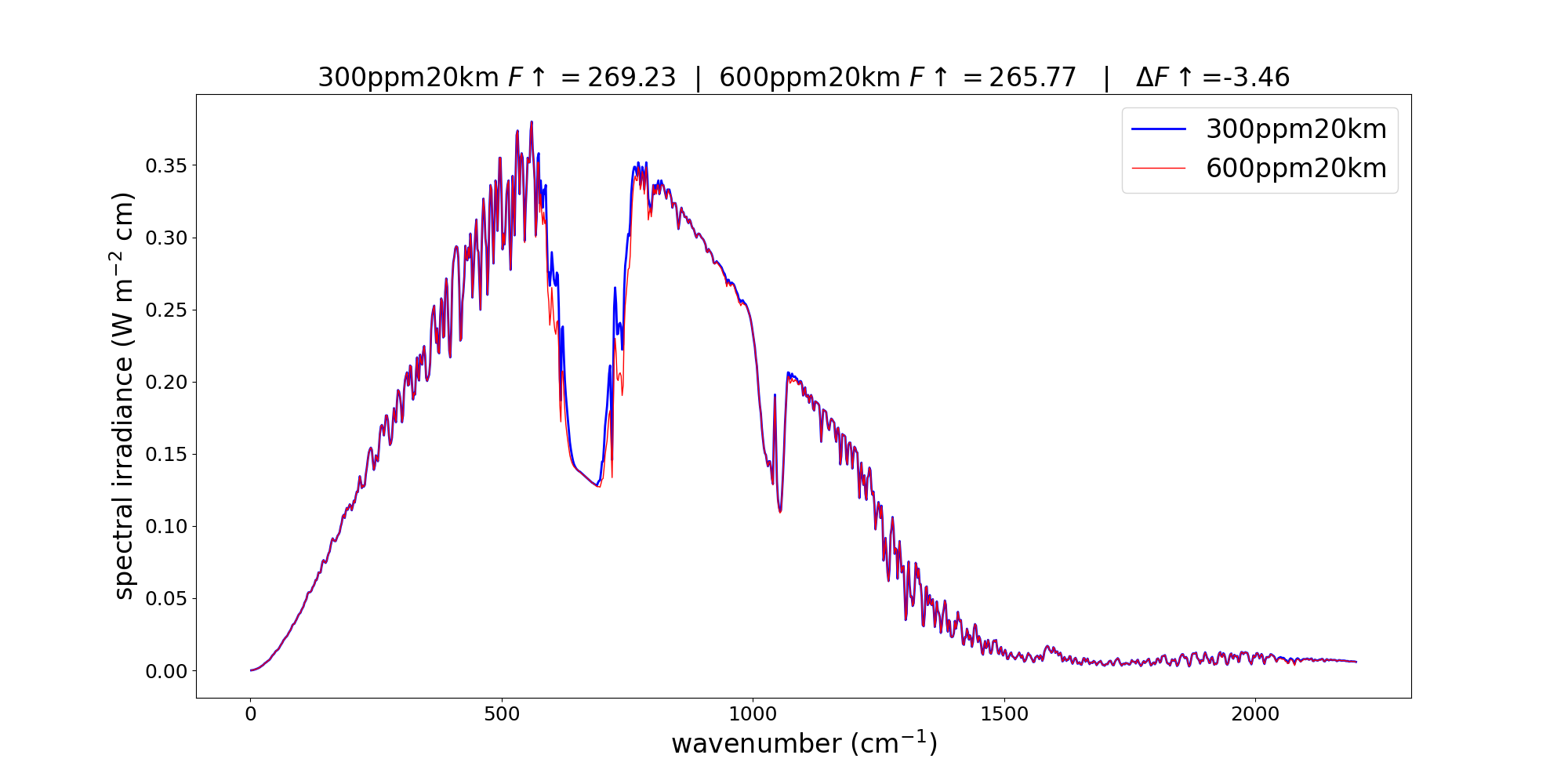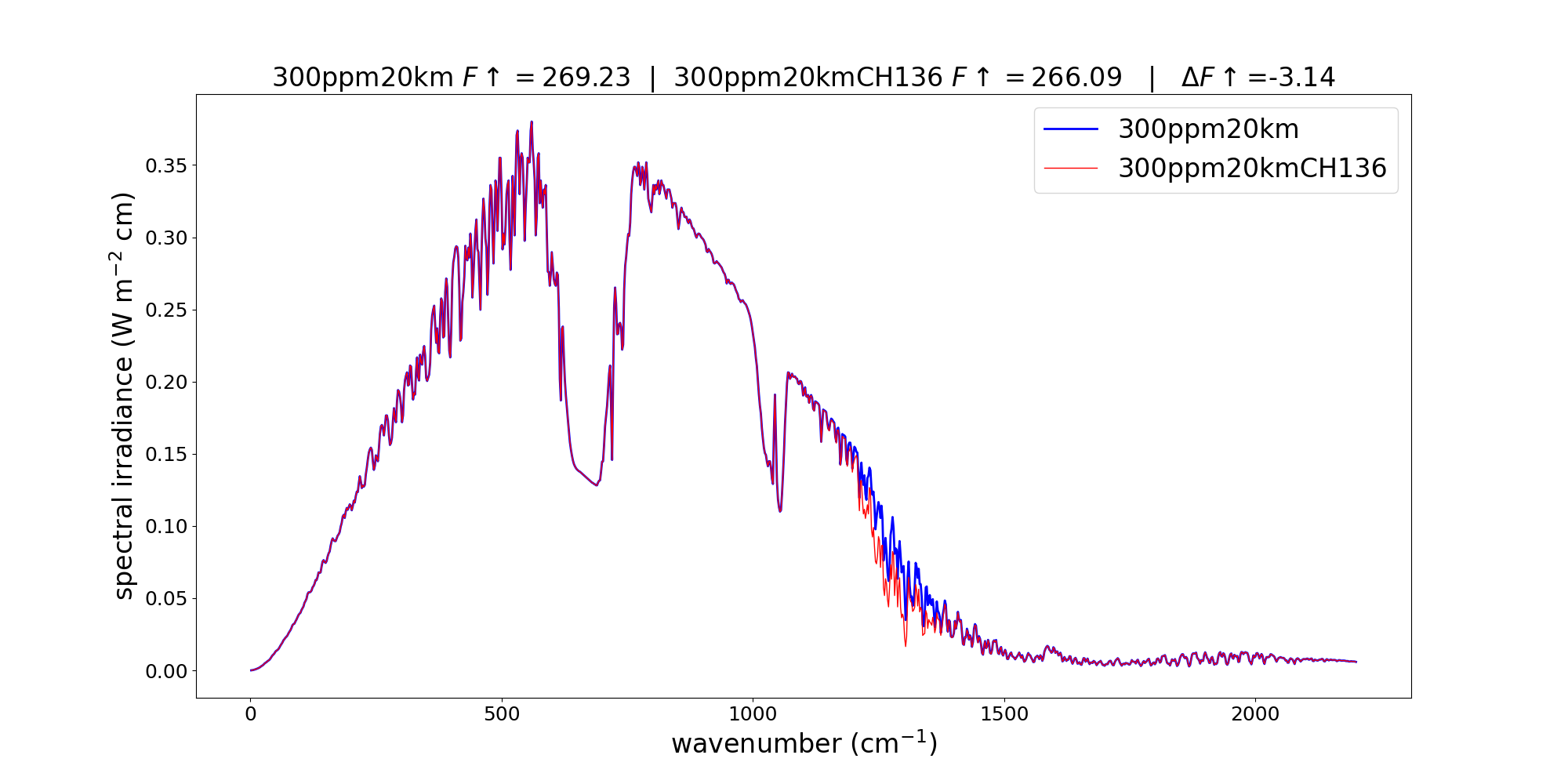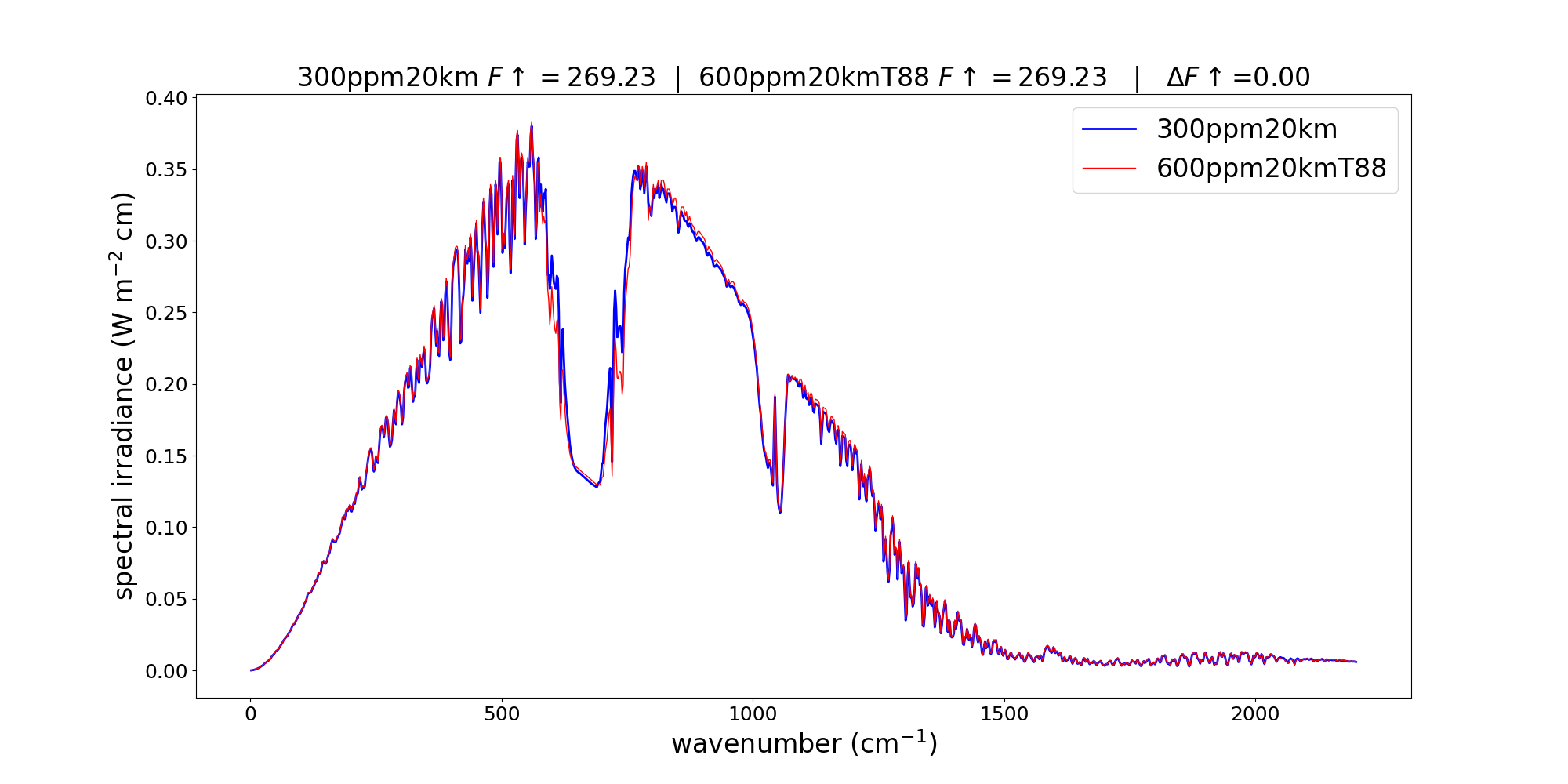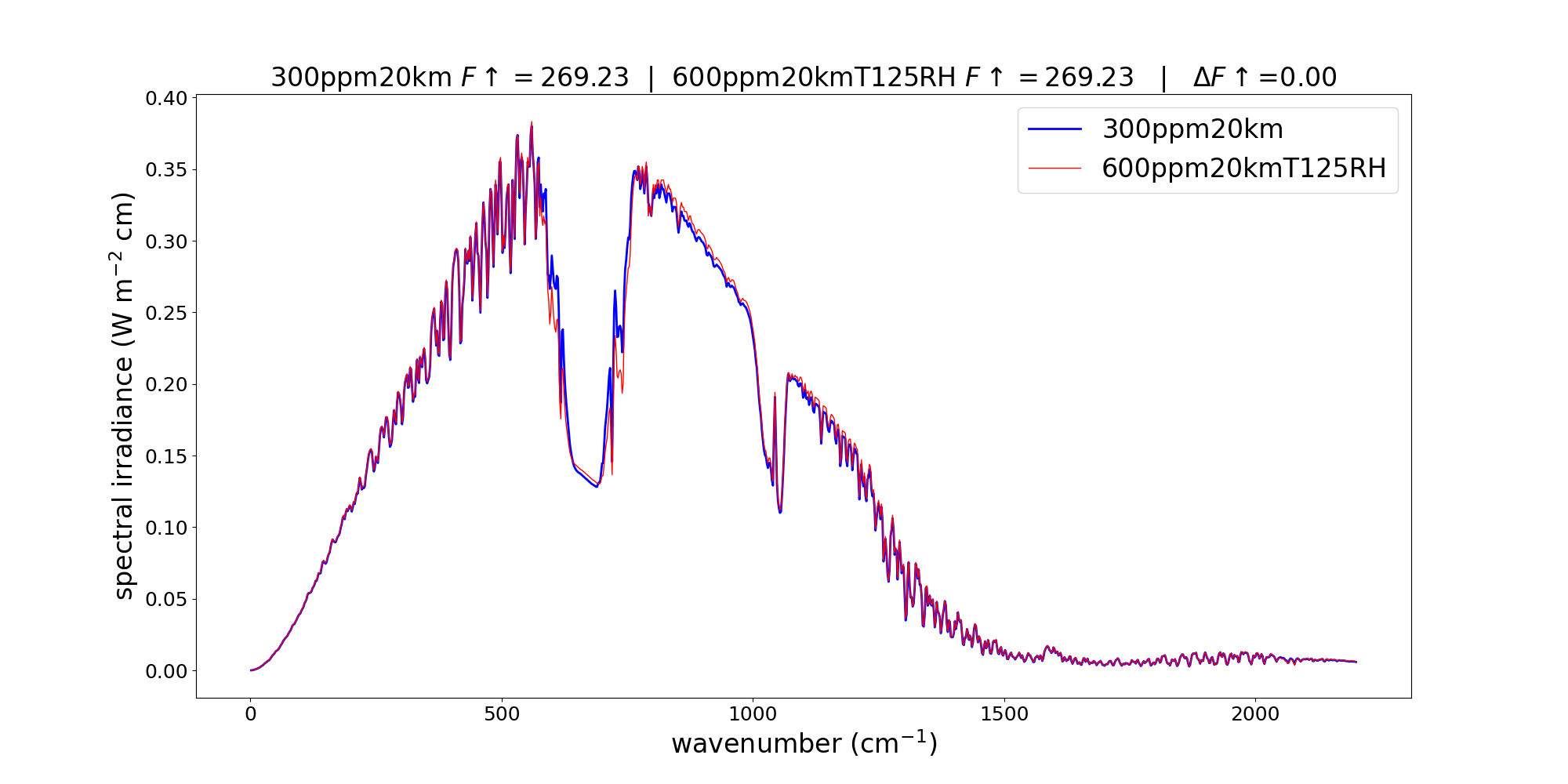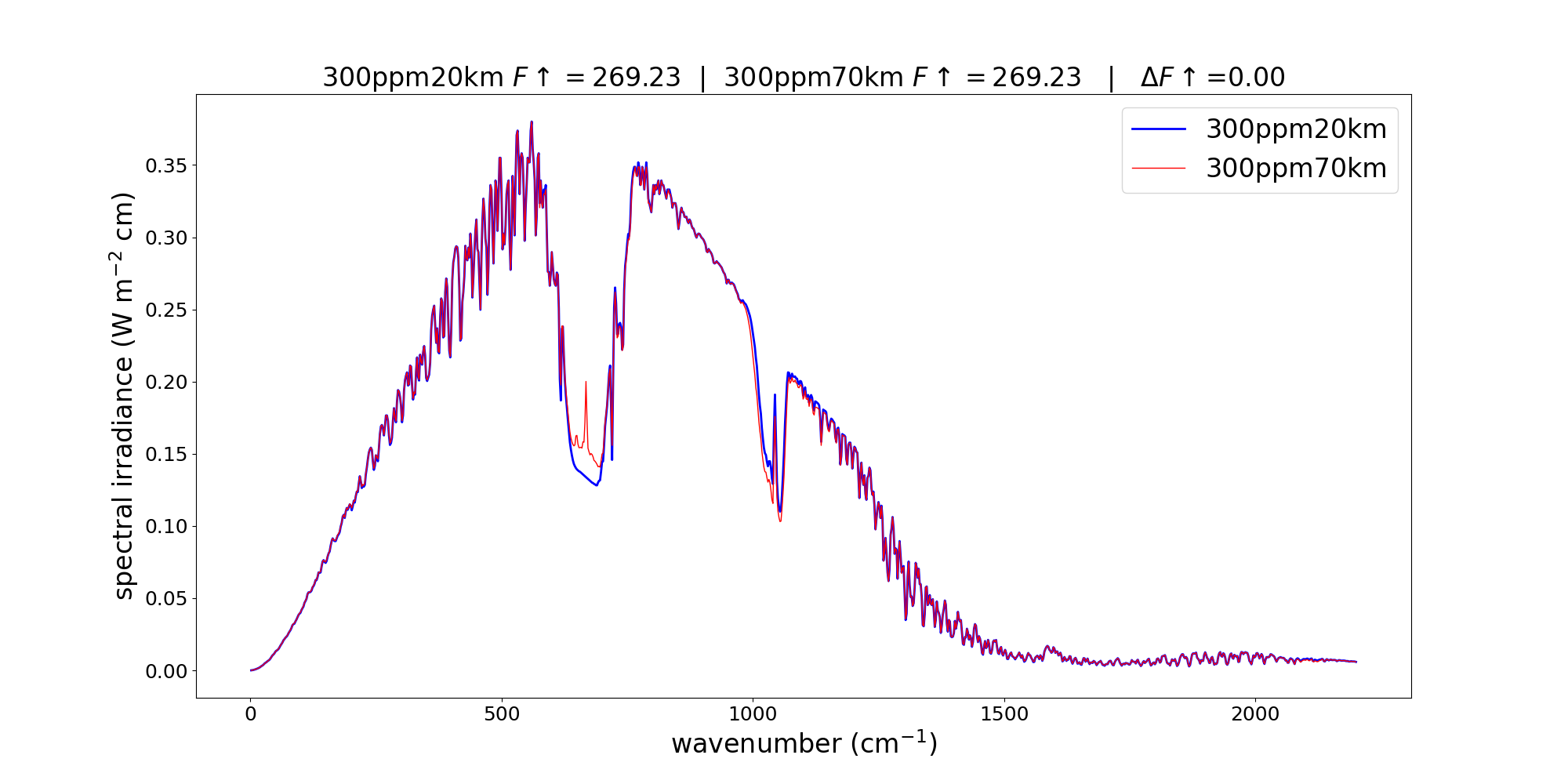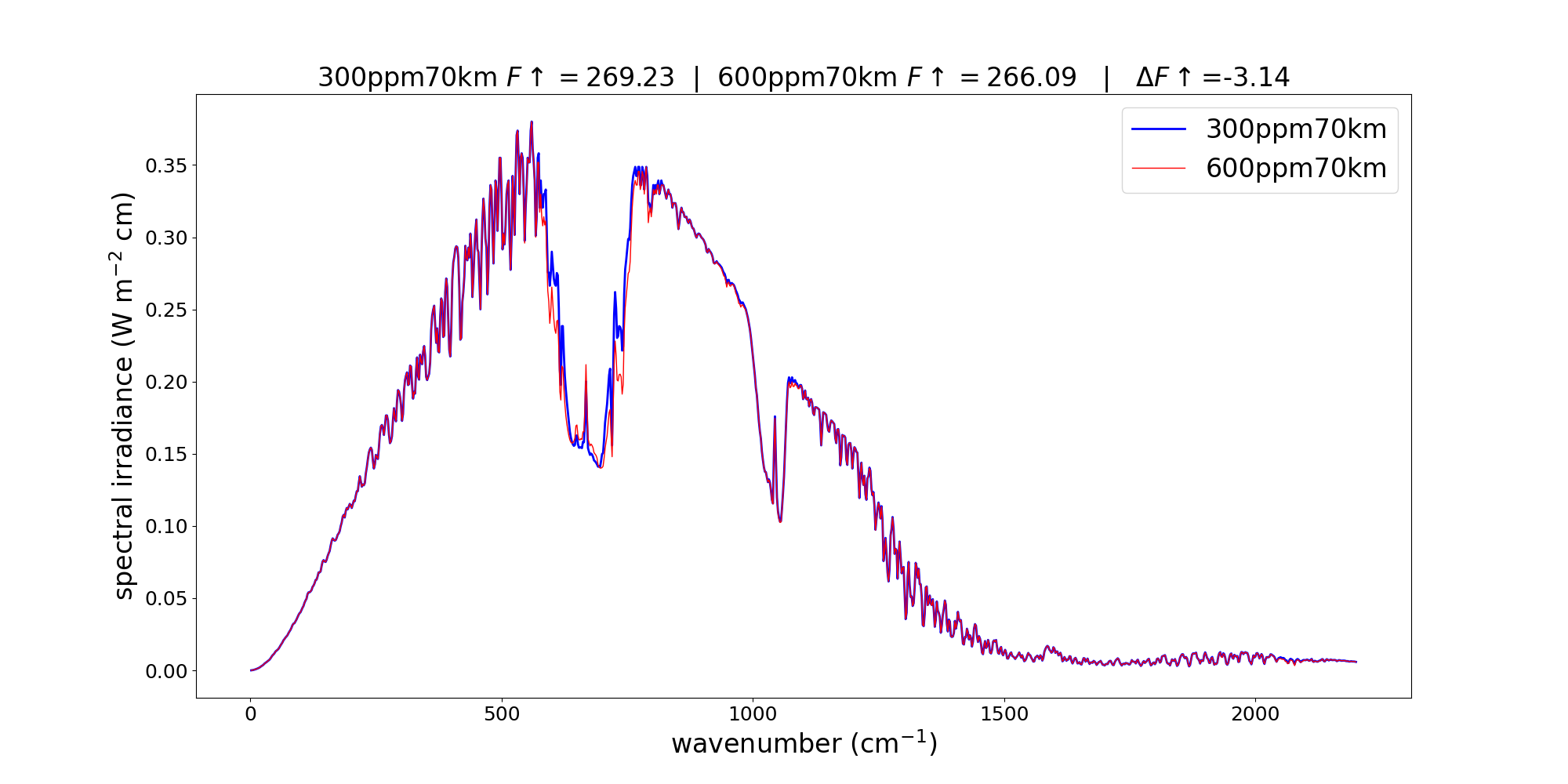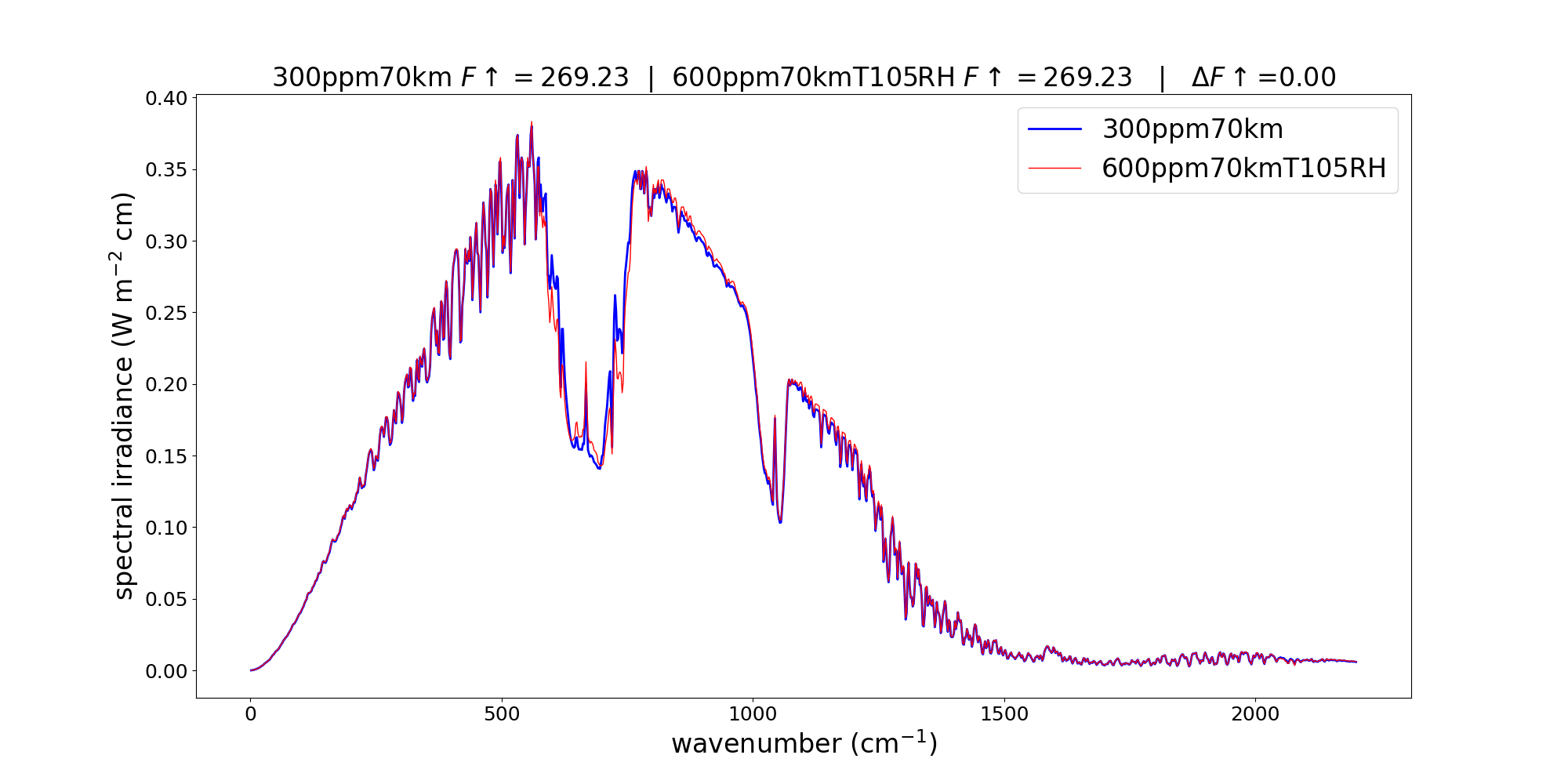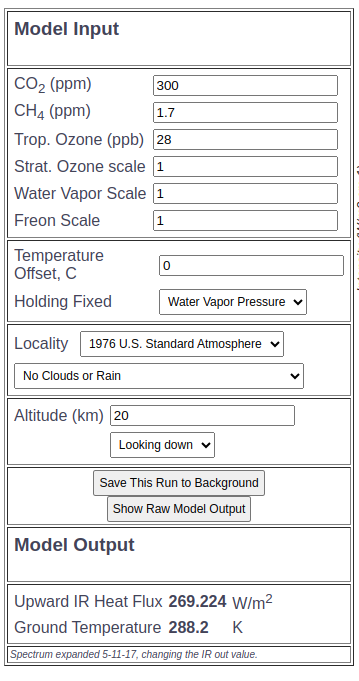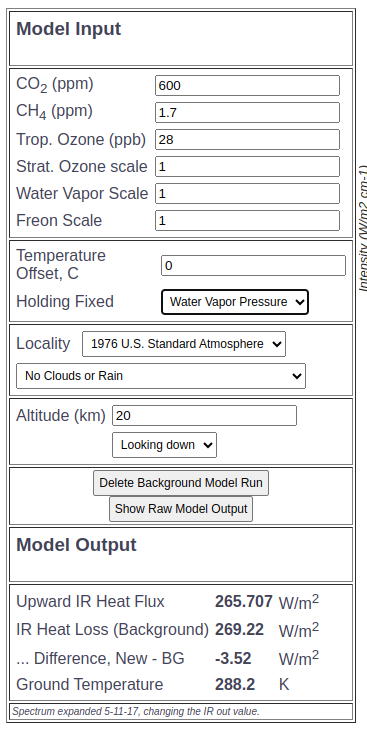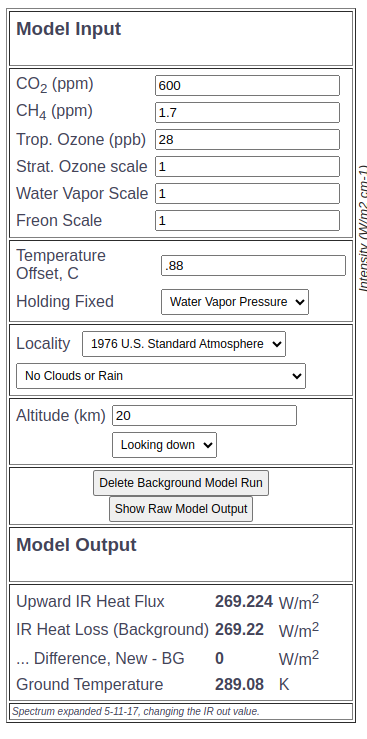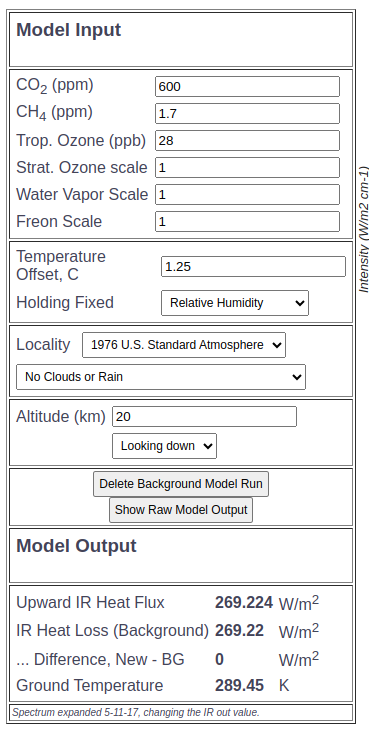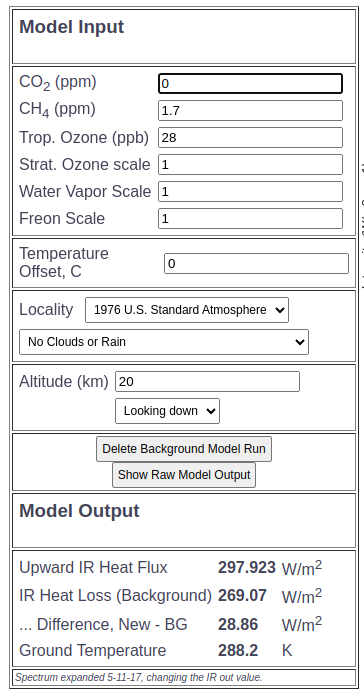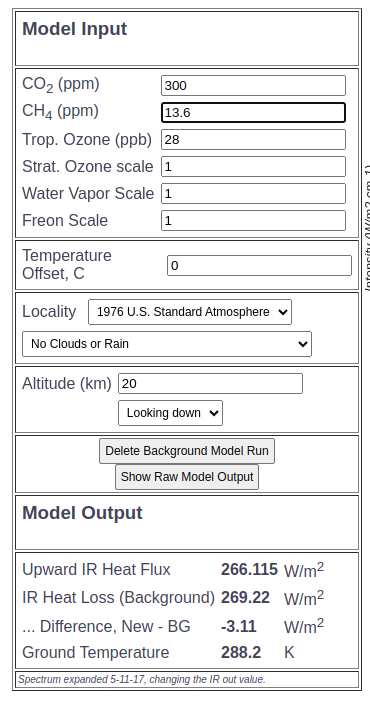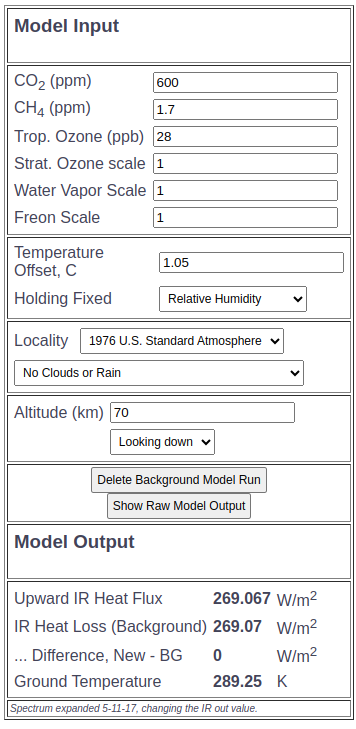Table of Contents
Radiative Forcing Experiments with Modtran
Reproduce with: modtranexp.tar.gz
Also at github
Using Modtran online at U. Chicago
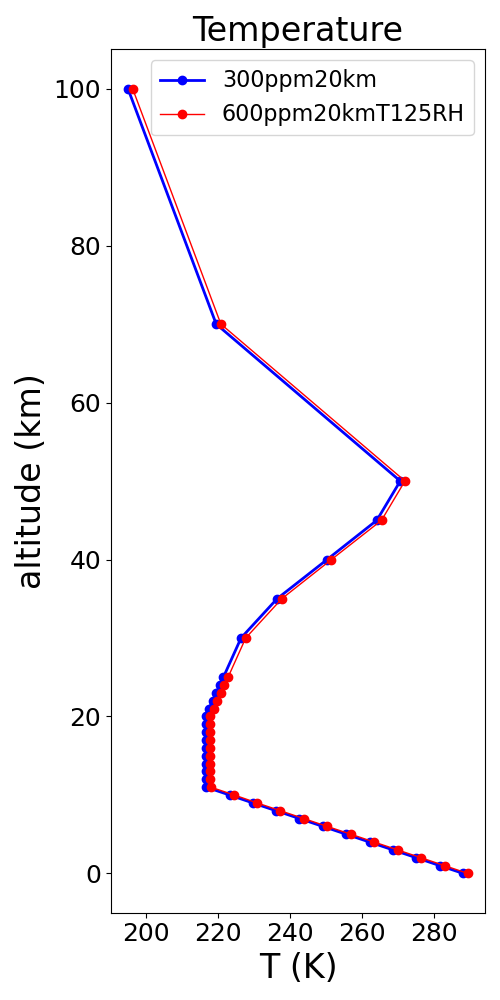 We use the website Modtran Infrared Light in the Atmosphere for the calculations. All calculations are 1976 U.S. Standard Atmosphere and no clouds.
We use the website Modtran Infrared Light in the Atmosphere for the calculations. All calculations are 1976 U.S. Standard Atmosphere and no clouds.
We assume a certain profile of atmospheric temperature is in equilibrium with the specified atmospheric constituents. The upward irradiance at a certain level (either 20 km or 70 km) is noted for this initial equilibrium profile. We seek to find the change in the temperature profile that could restore the upward irradiance after constituents are changed (such as doubling carbon dioxide). We could call that profile the new equilibrium profile.
For all experiments here, the temperature profile is 1976 U.S. Standard Atmosphere, with an optional specified uniform temperature offset (increase or decrease) as specified by the GUI. To the left is the initial assumed equilibrium profile, in blue, with 300 ppm of CO2. The red is the predicted new equilibrium, after carbon dioxide is doubled and water vapor increases to preserve the specified relative humidity that was in the initial profile. The required temperature offset to restore equilibrium was found to be 1.25 K.
Upward spectral irradiance at 20 km
For reasons explained below, experiments to explore adjusted radiative equilibrium are best done by monitoring the upward irradiance to 20 km, rather than the top of the atmosphere.
| Going from 300 ppm to 0 ppm CO2 would increase the outward irradiance $F\uparrow$ by 28.90 W m-2. The atmosphere, of course, would have to cool. |
|---|
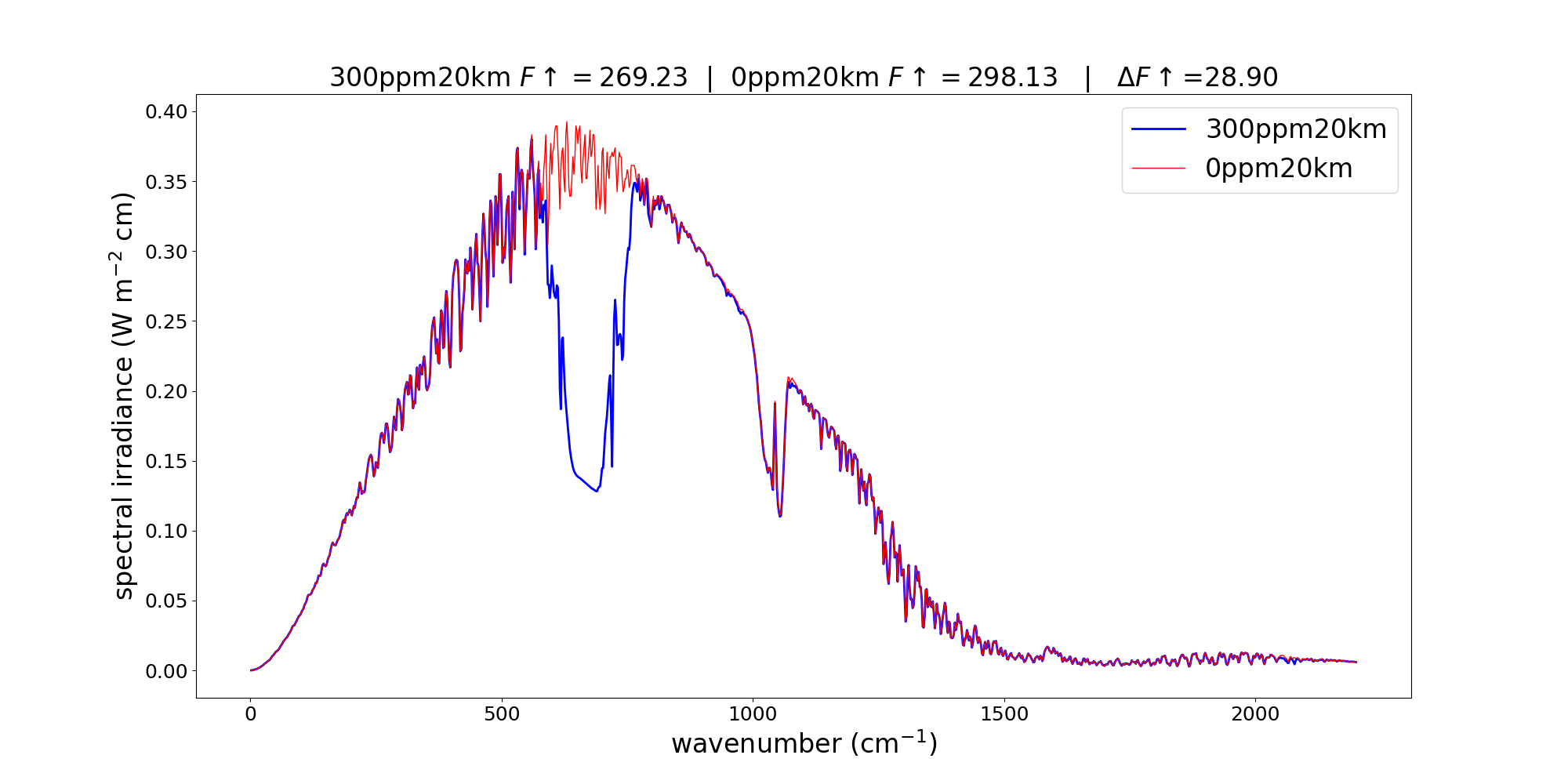 |
Adjusted equilibrium temperatures
Doubling CO2 and adjusting the temperature profile uniformly, to leave $F\uparrow$ unchanged.
Experiments at 70 km
| Double CO2. Enhanced stratospheric cooling. |
|---|

